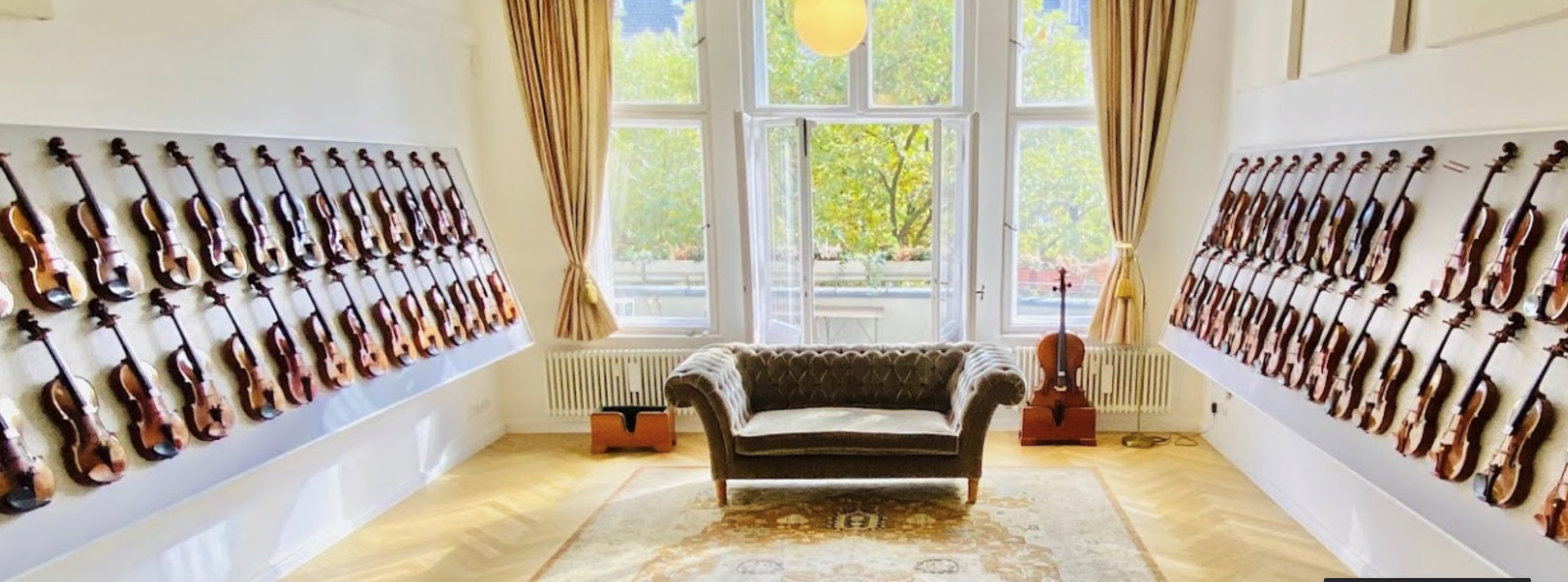MADE BY STRADIVARI, PLAYED BY 007 SISTER: THE CELLO SET TO BREAK HEARTS AND RECORDS
London Times, September 8, 2008
By Sue FoxThe Fleming is named after Amaryllis Fleming, the half-sister of 007 author Ian Fleming. It is insured for £1.4 million
A cello made by Antonio Stradivari and once owned by one of Britain’s best musicians is to be sold at an online auction next month – the first time such a rare, valuable instrument has found its way on to the internet.
The cello, which is almost 300 years old and is insured for £1.4 million, is one of about 60 surviving cellos made by the great instrument maker. Auctioneers expect that it will break records.
It is known as the Fleming, after its most recent owner, the late British cellist Amaryllis Fleming – the half-sister of the James Bond author, Ian. The cello is thought to be one of Stradivari’s greatest achievements.
Jason Price, of Tarisio, the internet auctioneers of fine instruments in New York, said that it had already generated a lot of interest, although the expected price would put it out of reach for most musicians.
&ldqou;It’s not likely that any individual musician will be able to afford to buy the cello, but we are seeing more and more investment groups as well as wealthy individuals buying rare instruments on behalf of very talented musicians,” he said. “They are happy to loan the violins or cellos. Whereas there is a lot of gloom and doom in the property market, rare musical instruments keep on increasing in value. This is a fairly secretive business, but I’ve heard rumours of someone paying $10 million [£5.66 million] for an instrument.”
Amaryllis Fleming, who died in 1999, loved the instrument for its beautiful tone. Julian Lloyd Webber, who played it two months ago at a concert dedicated to Fleming’s memory, has praised its personality.
Simon Morris, a director of violin dealers J & A Beare, which has looked after the Fleming, said that, unlike the musicians, fine instruments were never meant to retire. “They need to be played, they need to breathe,” he said. “It’s extraordinary, but the relationship between a musician and their cello is so close that the instrument eventually resonates with the very personal tone and sound and the person who is playing. No one really understands how that works. But it does.”
The world’s most expensive cello is another Stradivarius known as the Bonjour. It sold for $1.03 million at Christie’s in 1999 and is currently on loan to the Canada Council for the Arts Instrument Bank. Other famous Stradivari cellos include the Davidov, owned by Yo-Yo Ma, and the Duport, owned by the late Mstislav Rostropovich. The Fleming, made in Cremona, northern Italy, in 1717, suffered damage early in its life – probably in the 1750s in Madrid – and parts of it had to be replaced. The repair work was carried out by Joseph Contreras, Spain’s finest instrument maker of the time, but had the cello still been as Stradivari intended it would be worth many more millions. “Actually this is quite a cheap cello,” Mr Price said.
Amaryllis Fleming, who was born in 1925, began playing the cello when she was nine. She won a scholarship to the Royal College of Music in l943 and made her debut at the Proms with Sir John Barbirolli in l953. She became one of Europe’s leading cellists of the Fifties and Sixties, renowned for her performances of Bach’s cello suites.
In her later years she taught at the Royal College of Music, to which proceeds from the sale of the cello will go.
Fleming grew up believing that she was the adopted daughter of Eve Fleming, the beautiful, widowed mother of Ian Fleming, the James Bond author. At the age of 23, she learnt that Eve was, in fact, her real mother and that her father was the painter Augustus John.
There will be viewings of the Fleming cello in London, Cremona, New York and Boston. Mr Price said: “It won’t be going as unaccompanied baggage. Cellos have to have their own seat and they need to be treated extremely carefully.”
From 18th-century Italy to an auction on the internet
— Antonio Stradivari made the Fleming in 1717 to his “Forma B” pattern, which has been the model for most cellos made ever since
— Shortly afterwards the cello found its way to Madrid, like many other Stradivari instruments
— There is a blank in the next part of the cello’s history, but it is believed that it came to Britain during or after the Napoleonic Wars. Ultimately it came into the family of Kington Oliphant, of Gask, Perthshire. The Hill firm of violin dealers in Bond Street were friendly with the owner’s brother. Arthur Hill wrote in a diary: “We had no idea of the existence of this cello. When the instrument emerged from its old case we thought it one of the finest examples which had been brought to light.”
— In 1893 the Fleming was sold to Emil Hanna, a leading German dealer of the time. From him, it was passed on to, among others, Professor Hegar, after whom it has sometimes been named
— In 1928 the cello’s owner was an enthusiastic amateur, Dr Kühne. It emerged safely from the Second World War in the possession of Dr Pistor, of Leipzig, a collector who resettled in northwest Germany
— In 1962 Paul Rosenbaum – Amaryllis Fleming’s friend and later love of her life – arranged the sale of Dr Pistor’s instruments, with the cello going to Fleming


